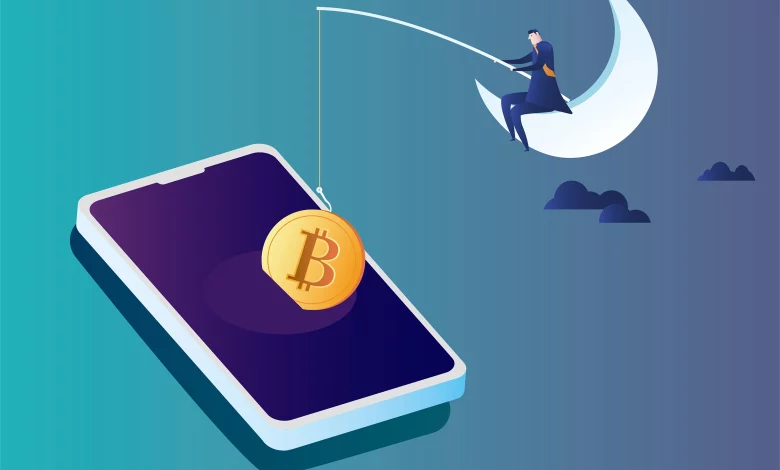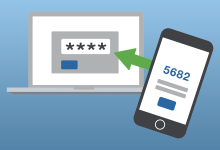The Most Common Cryptocurrency Scams and How to Avoid Them

Which are the Most Common Cryptocurrency Scams? How can you Avoid Them? You may have heard of Bitcoin, the world’s first and most well-known cryptocurrency. Bitcoin and other cryptocurrencies like Ethereum and Litecoin are digital assets that use cryptography to secure their transactions and control the creation of new units. Cryptocurrencies are decentralized, meaning they aren’t subject to government or financial institution control.
Sounds great, right? Unfortunately, as with any new technology, there are always scammers waiting to take advantage of unsuspecting people. In this article, we’ll walk you through the most common cryptocurrency scams and teach you how to avoid them.
What is cryptocurrency?
Cryptocurrency is a digital or virtual currency that uses cryptography to secure its transactions and control the creation of new units. Cryptocurrencies are decentralized, meaning they are not subject to government or financial institution control. Bitcoin, the first and most well-known cryptocurrency, was created in 2009.
Since its inception, cryptocurrency has been a target for scammers. Criminals have devised a variety of schemes to steal money from unsuspecting victims. Here are some of the most common cryptocurrency scams and how to avoid them.
The most used cryptocurrencies of all time
There are a few cryptocurrencies that are used more than others. Out of all of the cryptos out there, Bitcoin, Ethereum, and Litecoin are the most commonly used. These three form the so-called “big three” of cryptocurrencies.
Bitcoin
Bitcoin is the first successful internet money based on peer-to-peer technology; whereby no central bank or authority is involved in the transaction and production of the Bitcoin currency. It was created by an anonymous individual/group under the name, Satoshi Nakamoto. The source code is available publicly as an open-source project, anybody can look at it and be part of the developmental process.
It is changing the way we see money as we speak. The idea was to produce a means of exchange, independent of any central authority, that could be transferred electronically in a secure, verifiable and immutable way. It is a decentralized peer-to-peer internet currency making mobile payment easy, has very low transaction fees, protects your identity, and works anywhere all the time with no central authority and banks.
Bitcoin is designed to have only 21 million BTC ever created, thus making it a deflationary currency. Bitcoin uses the SHA-256 hashing algorithm with an average transaction confirmation time of 10 minutes. Miners today are mining Bitcoin using ASIC chips dedicated to only mining Bitcoin, and the hash rate has shot up to PETA hashes.
Being the first successful online cryptography currency, Bitcoin has inspired other alternative currencies such as Litecoin, Peercoin, Primecoin, and so on. The cryptocurrency then took off with the innovation of the turning-complete smart contract by Ethereum which led to the development of other amazing projects such as EOS, Tron, and even crypto-collectables such as CryptoKitties.
Ethereum
Ethereum is a global, open-source platform for decentralized applications. In other words, the vision is to create a world computer that anyone can build applications in a decentralized manner; while all states and data are distributed and publicly accessible. Ethereum supports smart contracts in which developers can write code in order to program digital value. Examples of decentralized apps (dapps) that are built on Ethereum include tokens, non-fungible tokens, decentralized finance apps, lending protocols, decentralized exchanges, and much more.
On Ethereum, all transactions and smart contract executions require a small fee to be paid. This fee is called Gas. In technical terms, Gas refers to the unit of measure of the amount of computational effort required to execute an operation or a smart contract. The more complex the execution operation is, the more gas is required to fulfil that operation. Gas fees are paid entirely in Ether (ETH), which is the native coin of the blockchain. The price of gas can fluctuate from time to time depending on the network demand.
Litecoin
Litecoin is a peer-to-peer cryptocurrency created by Charlie Lee. It was created based on the Bitcoin protocol but differs in terms of the hashing algorithm used. Litecoin uses the memory-intensive Scrypt proof of work mining algorithm. Scrypt allows consumer-grade hardware such as GPU to mine those coins.
Why Litecoin?
Litecoin is a cryptocurrency that has evolved from Bitcoin after its own popularity in the industry, this alternative, or ‘altcoin’ has emerged to allow investors to diversify their digital currency package, according to Investopedia. Litecoin is one of the most prominent altcoins and was created by former Google employee and Director of Engineering at Coinbase, Charlie Lee.
It was the first to alter Bitcoin and the most significant difference is that it takes 2.5 minutes for Litecoin to generate a block, or transaction, in comparison to Bitcoin’s 10 minutes.‘While this matters little to traders, miners who use hardware to run Bitcoin’s network cannot switch over to Litecoin. This keeps bigger mining conglomerates away from Litecoin because they cannot easily optimize their profits by swapping to another coin, contributing to a more decentralized experience. Litecoin also has bigger blocks, and more coins in circulation, making it more affordable and swift when transacting,’ Investopedia explained.
As explained above, Litecoin can transact a lot faster than Bitcoin, but there are also a number of other characteristics that investors need to know before trading. Litecoin can handle higher volumes of transactions because of the capability of transacting faster and if Bitcoin attempted to transact on the scale of its altcoin, a code update would be needed. However, Litecoin’s blocks would be larger, but with more ‘orphaned blocks. The faster block time of Litecoin reduces the risk of double spending attacks – this is theoretical in the case of both networks having the same hashing power.
Litecoin Technical Details:
The transaction confirmation time taken for Litecoin is about 2.5 minutes on average (as compared to Bitcoin’s 10 minutes). The Litecoin network is scheduled to cap at 84 million currency units. Litecoin has inspired many other popular alternative currencies (eg. Dogecoin) because of its Scrypt hashing algorithm in order to prevent ASIC miners from mining those coins. However, it is said that by the end of this year, Scrypt ASIC will enter the mass market.
The Most Common Cryptocurrency Scams and How to Avoid Them
Phishing Scams
Phishing scams are one of the most common types of cryptocurrency scams. This is when a scammer sends an email or text message that looks like it’s from a legitimate company or individual but is actually a ploy to steal your cryptocurrency.
The best way to avoid phishing scams is to make sure you only send cryptocurrency to addresses that you trust. Don’t click on links in emails or text messages, and always type the address of the website manually into your browser. If you’re not sure whether an email or text message is legitimate, contact the company or individual directly to ask them about it.
Pump-and-Dump Schemes
The next type of scam that you might come across is the pump-and-dump scheme. This is when a group of people buys up a bunch of a particular coin, artificially inflating the price, and then sells it off when the price is at its peak.
Promoted contents:
- Who is the founder of BBC?
- Toshiba Corporation: Who is the founder of Toshiba?
- Google Releases Android 14 Beta 3, With Platform Stability and New Features
- Who founded Nokia? Here is all you need to know
- Who is the founder of HTC Corporation?
- Fast Charging and Multiple Variants: Samsung’s Galaxy Tab S9+ and Tab S9 Ultra Unveiled
- Who is the founder of Realme?
- The Mobvoi TicWatch 5 Pro has been launched
- Rumours of the Galaxy S23 FE: A budget-friendly variant of the Galaxy S23
- The upcoming iOS 17 will add the ability to use your locked iPhone as a smart display
You might be thinking, “Well, how do I avoid something like that?” and the answer is actually pretty simple. The best way to avoid getting caught up in a pump-and-dump scheme is to diversify your portfolio.
By investing in a variety of different coins, you’ll be less likely to see the value of your entire investment portfolio take a hit if one particular coin does get dumped. You should also keep an eye on social media and online forums for any mention of pump-and-dump schemes, so you can avoid getting caught up in one.
Ponzi and Pyramid Schemes
Ponzi and pyramid schemes are two of the most common scams in the cryptocurrency world. If you don’t know what either of these is, a Ponzi scheme is when someone entices you to invest in a project by promising high returns. They then use new investors’ money to pay back old investors, giving the illusion that the project is profitable.
Pyramid schemes work in a similar way, except that instead of just getting people to invest, they also get people to recruit new investors. These schemes are also sometimes called “multi-level marketing” schemes.
Both of these types of scams are illegal in most jurisdictions, and they’re both very risky for investors. If you’re approached by someone asking you to invest in a cryptocurrency project, do your research to make sure it’s legitimate before you hand over any money.
Fake ICOs
You might be wondering what an ICO is. ICOs are “initial coin offerings,” and they are basically a way for companies to raise money by selling crypto tokens. The problem is that there have been a lot of scams associated with ICOs, to the tune of hundreds of millions of dollars.
Some fake ICOs will create a website that looks very legitimate, and they might even have a whitepaper that looks legit. But if you do your research, you’ll quickly realize that the team behind the project doesn’t exist, or the project itself is nothing more than vaporware.
To avoid getting scammed by a fake ICO, make sure to do your due diligence before investing in any project. Research the team behind the project, read the whitepaper and make sure there is a working product. If something sounds too good to be true, it probably is.
Exit Scams
An exit scam is pretty much exactly what it sounds like—it’s when a crypto company or project abruptly shuts down and disappears, taking all of its investors’ money with it.
This type of scam is usually perpetrated by an anonymous team that’s looking to make a quick buck and then get out before anyone realizes what’s going on. They’ll often build up hype around their project and then do a disappearing act when it’s time to deliver on their promises.
So, how can you avoid being scammed in this way? Well, for one, you should be very wary of any project that’s anonymous. If the team behind it can’t be identified, that’s a major red flag.
You should also be careful of projects that are overhyped and seem too good to be true. If something sounds too good to be true, it probably is. Do your due diligence and research a project before investing any money in it.
Ransomware
Ransomware is a type of malware that puts a person’s personal data at risk unless they pay a ransom to the person who hacked them. This can be a scary experience, and it’s one that you’ll want to avoid at all costs.
So, how can you protect yourself from ransomware? For starters, you should always have a backup of your data. This way, even if you do become a victim of ransomware, you’ll still have access to your data.
You should also make sure that you have up-to-date antivirus software installed on your computer. This will help to protect you from malware in general, not just ransomware.
Finally, be careful about the emails that you open and the attachments that you download. If you receive an email from someone you don’t know, or if an email looks suspicious, don’t open it. And if you do download an attachment, make sure that it’s from a trusted source.
Conclusion
The cryptocurrency world is full of scams, and it can be hard to stay safe if you’re not careful. The most common scams are Ponzi schemes, fake ICOs, and mining scams, but there are many others.
The best way to avoid scams is to do your research and only invest in reputable projects. If something sounds too good to be true, it probably is. Be careful of anyone who asks for personal information or money upfront, and don’t give away your private keys or passwords to anyone.
With a little bit of knowledge and caution, you can avoid most cryptocurrency scams and keep your investment safe.








